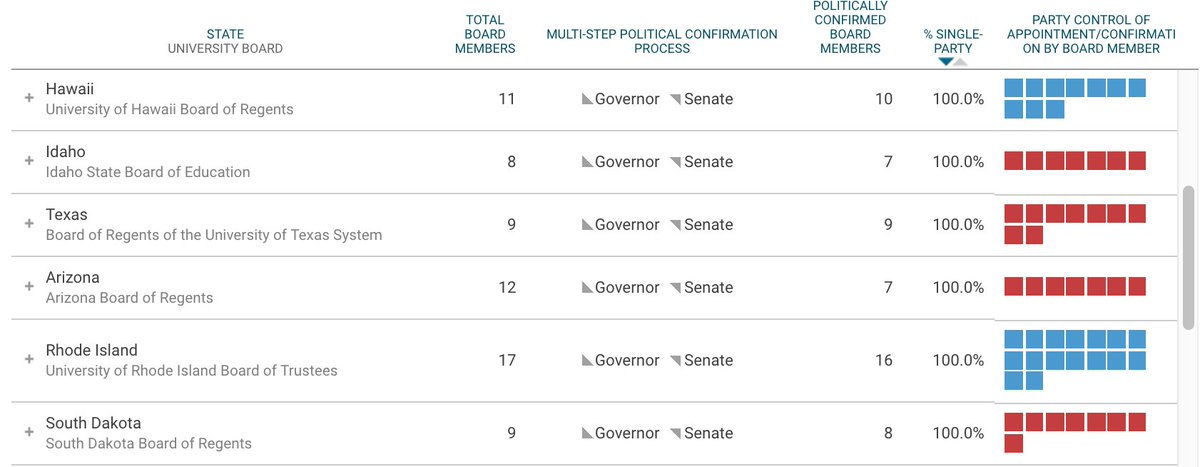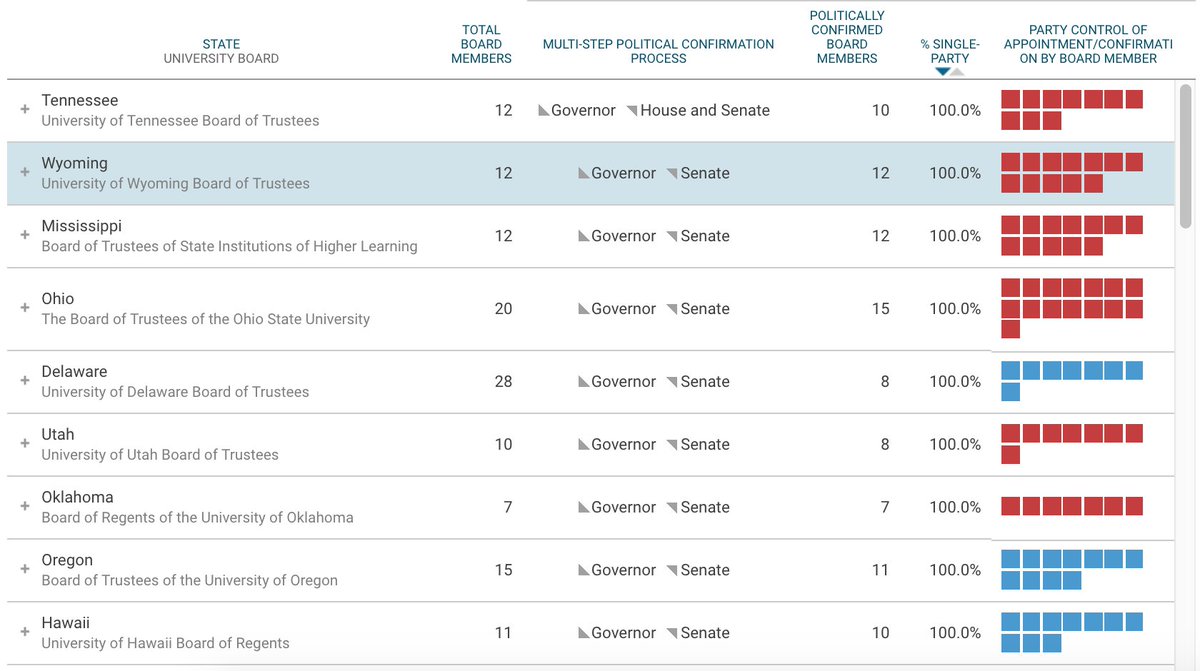Brief thread: A new working paper shows that state political leadership is a strong indicator to predict college reopening. With GOP governors and lawmakers, there was a higher chance of announcing in-person operations. https://www.chronicle.com/article/colleges-pledged-to-follow-the-science-but-divides-in-reopening-plans-reflected-state-politics">https://www.chronicle.com/article/c...
This adds to a bit of analysis that& #39;s already been circulating. @DavidsonCollege scholars found close ties between the end of in-person instruction and state& #39;s enactment of emergency orders. https://preprints.apsanet.org/engage/api-gateway/apsa/assets/orp/resource/item/5ea72f8fbe9a920012537e66/original/tracking-campus-responses-to-the-covid-19-pandemic.pdf">https://preprints.apsanet.org/engage/ap...
And my colleagues @chronicle analyzed college reopening plans in June, finding that nearly 80% of institutions in states Trump won in & #39;16 had announced plans to open in person. (Just 45% of schools in states that supported Clinton had announced such plans) https://www.chronicle.com/article/has-reopening-become-a-partisan-issue">https://www.chronicle.com/article/h...
In an interview with @Dcollier74 yesterday he pointed to unknown ways state leadership could have influenced college decisions. If lawmakers are big donors, or alums. Fear of losing revenue from the state. And, he mentioned, the composition of boards.
. @jackstripling and I have spent a lot of time thinking about college boards and their relationships with states. We found board members jockeying for strong ties with lawmakers who appointed them, and politicians who booted regents/trustees without strong political alignment
(Here& #39;s a story about that I& #39;ve only promoted, like, 100 times: https://www.chronicle.com/article/the-new-order)">https://www.chronicle.com/article/t...
But I want to focus on this data page, artfully made by Brian O& #39;Leary. It took a lot of time to figure out how many board members at state flagships were appointed by a multi-step political process. Such a process ostensibly allows for a bipartisan check. https://www.chronicle.com/article/public-college-boards-and-state-politics">https://www.chronicle.com/article/p...
That means in certain states, many board members are appointed by one chamber of government (the Governor, for example) and confirmed by a majority of another chamber (like the Senate). If different parties control different chambers, you may get more moderate college leadership
However: There are more states today with trifecta government control — the same party controlling the Governor& #39;s office, the House, and the Senate — than nearly at any point in more than half a century.
Levels of trifecta leadership have been very high since 2013-2014. What does that mean for boards?
Look how many states have all of their multi-step politically appointed board members nominated and confirmed by the same party.
https://www.chronicle.com/article/public-college-boards-and-state-politics">https://www.chronicle.com/article/p...
Look how many states have all of their multi-step politically appointed board members nominated and confirmed by the same party.
https://www.chronicle.com/article/public-college-boards-and-state-politics">https://www.chronicle.com/article/p...

 Read on Twitter
Read on Twitter



